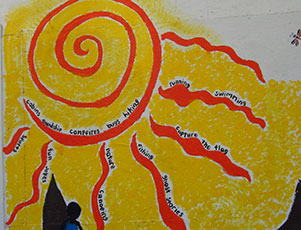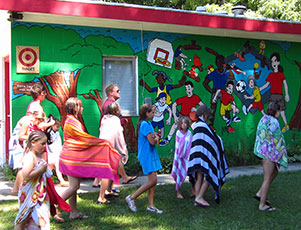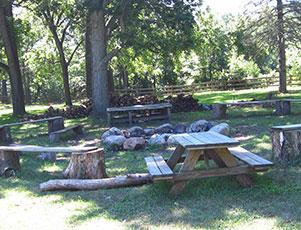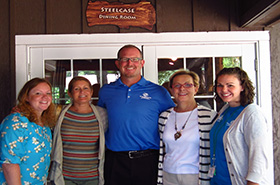In 1938 Grand Rapids Police Department Superintendent Frank O’Malley saw a worrisome statistic. That year 147 young people were arrested for various crimes. Whether it was a consequence of those hard-scrabble Great Depression years or not, Superintendent O’Malley refused to accept the number.
That Christmas he called together the inner-city community and shared his plan. The police department was setting up a youth center on Finney S.W. near where these budding law-breakers lived. Instead of hanging out on the streets, the city’s young people could come to the Finney center for recreation led by caring adults, including police men.
O’Malley’s idea worked. The next year the number of young people arrested dropped to four. The summer of 1942 Supt O’Malley opened a summer camp for these young people.
Fast forward 71 years to 2013 and head south to the original 40-acre Camp O’Malley in Caledonia. Some 600 of the at-risk children O’Malley once worried about get to spend a week in a verdant outdoor space complete with a climbing wall, obstacle course, arts, crafts, music center, and swimming pool. And the GRPD is still the key partner with officers spending time at camp every day. The young people learn to know Grand Rapids police officers not as adversaries, but as friends.
The Wege Foundation sponsors staff from Holland’s Outdoor Discovery Center to visit the camp bringing live animals, birds, reptiles. The ODC team also comes with kayaks to take the campers on the adjoining Thornapple River. Campers who have never left the city get their first chance to pet owls, touch snakes, and hold turtles.
How does the GRPD assess the long-term affect Camp O’Malley has on the campers? They can’t. But they do know they make fewer juvenile arrests in the city than they would have to without Camp O’Malley.
••The above photo shows O’Malley Camp Staff leaders Rebecca Massad, left, Rick Huisman, middle, and Amanda Alters, right, taking Wege Foundation officers Terri McCarthy and Ellen Satterlee on a tour of the camp. Since The Wege Foundation was founded by Peter M. Wege whose father started Metal Office Furniture/Steelcase, the background fits right in!




